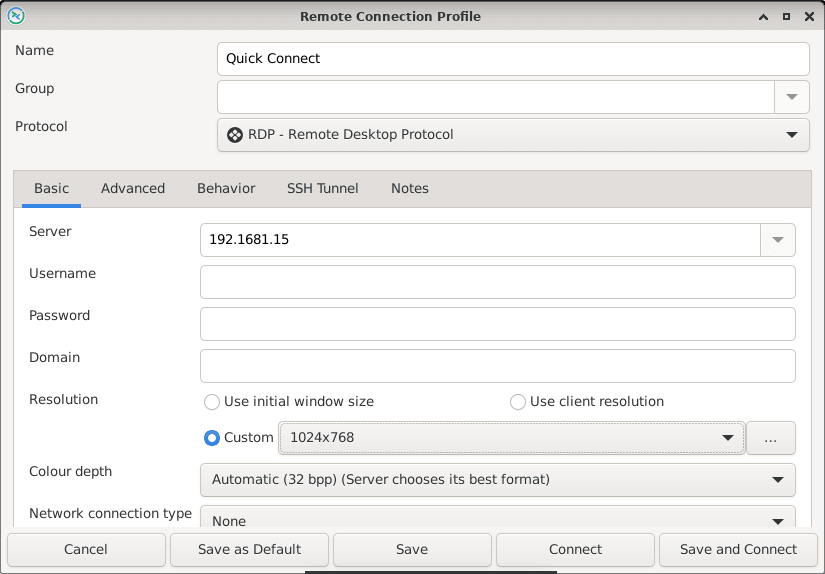How To Install Remmina on Ubuntu 24.04 LTS

In today’s interconnected world, remote desktop tools have become an essential part of modern computing. These powerful applications allow users to access and control remote computers from anywhere, streamlining work processes and enhancing collaboration. Among the various remote desktop clients available for Linux, Remmina stands out as a versatile and feature-rich solution. In this comprehensive guide, we will walk you through the process of installing Remmina on Ubuntu 24.04, exploring different installation methods and their advantages.
What is Remmina?
Remmina is a free and open-source remote desktop client for Linux that supports multiple protocols, including RDP (Remote Desktop Protocol), VNC (Virtual Network Computing), SSH (Secure Shell), and more. With its user-friendly interface and extensive features, Remmina simplifies the management of remote desktops, making it an ideal choice for both beginners and advanced users.
Preparing Your System
Before proceeding with the installation of Remmina, it’s crucial to ensure that your Ubuntu 24.04 system is up to date. Open a terminal and run the following commands to update and upgrade your system packages:
sudo apt update
sudo apt upgradeInstallation Methods
Method 1: Installing via Snap
Snap is a package management system developed by Canonical, the company behind Ubuntu. It offers a convenient and secure way to install applications across different Linux distributions. To install Remmina using Snap, follow these steps:
1. Install Snapd if it’s not already installed on your system:
sudo apt install snapd2. Once Snapd is installed, you can proceed with installing Remmina:
sudo snap install remmina3. After the installation is complete, you can launch Remmina from the applications menu or by running the following command in the terminal:
remminaOne advantage of using Snap is that it automatically updates Remmina to the latest version, ensuring you always have access to the newest features and bug fixes.
Method 2: Installing via PPA
Personal Package Archives (PPAs) are repositories maintained by the Ubuntu community that provide additional software packages not included in the official Ubuntu repositories. Installing Remmina via PPA allows you to access the latest stable release. Here’s how to do it:
1. Add the Remmina PPA repository to your system:
sudo add-apt-repository ppa:remmina-ppa-team/remmina-next2. Update the package lists and install Remmina along with the RDP and secret plugins:
sudo apt update
sudo apt install remmina remmina-plugin-rdp remmina-plugin-secretThe RDP plugin enables Remmina to connect to Windows machines using the Remote Desktop Protocol, while the secret plugin provides secure storage for passwords.
Method 3: Installing via Flatpak
Flatpak is a universal package management system that allows you to install applications across various Linux distributions. It provides a sandboxed environment, ensuring that applications are isolated from the rest of the system. To install Remmina using Flatpak, follow these steps:
1. Install Flatpak and add the Flathub repository:
sudo apt install flatpak
flatpak remote-add --if-not-exists flathub https://flathub.org/repo/flathub.flatpakrepo2. Install Remmina using Flatpak:
flatpak install flathub org.remmina.RemminaFlatpak offers a consistent and secure way to install applications, making it an excellent choice for users who prioritize stability and isolation.
Method 4: Installing via APT
For users who prefer a straightforward installation process, installing Remmina directly from Ubuntu’s official repository using the APT package manager is a viable option. Simply run the following command in the terminal:
sudo apt install remmina remmina-plugin-rdp remmina-plugin-vncThis command installs Remmina along with the RDP and VNC plugins, enabling support for the respective remote desktop protocols.
Post-Installation Steps
After successfully installing Remmina, you can launch the application from the applications menu or by running the “remmina” command in the terminal. If you require additional plugins for specific protocols, you can install them using the package manager corresponding to your chosen installation method.

Troubleshooting Common Issues
While the installation process for Remmina is generally straightforward, you may encounter some common issues. If Remmina fails to launch or connect to remote desktops, consider the following troubleshooting tips:
- Ensure that the required plugins are installed for the desired remote desktop protocol (e.g., RDP, VNC).
- Verify that the remote desktop server is accessible and properly configured to accept connections.
- Check your network connectivity and firewall settings to ensure that Remmina can communicate with the remote machine.
- If you encounter any error messages, search online forums or the Remmina documentation for specific solutions.
Congratulations! You have successfully installed Remmina. Thanks for using this tutorial for installing the Remmina remote desktop on Ubuntu 24.04 LTS system. For additional help or useful information, we recommend you check the official Remmina website.